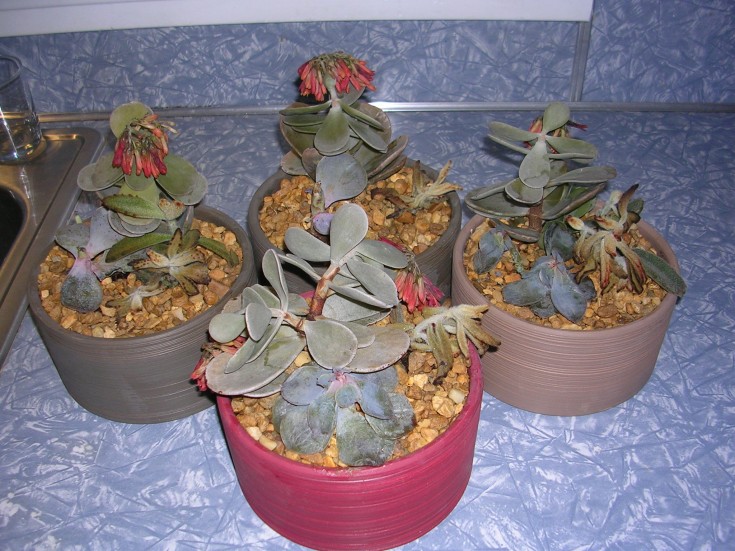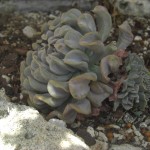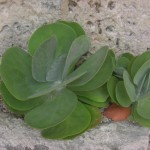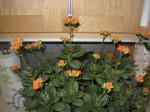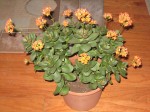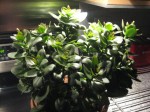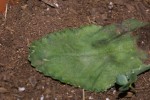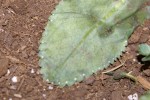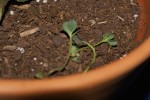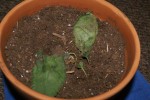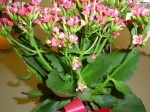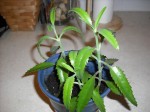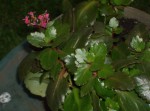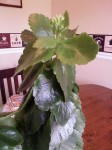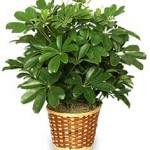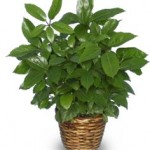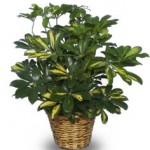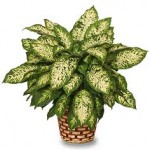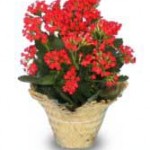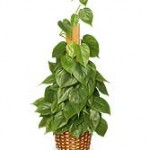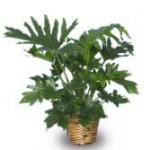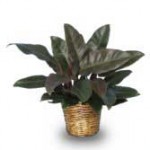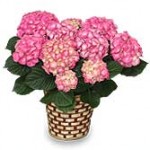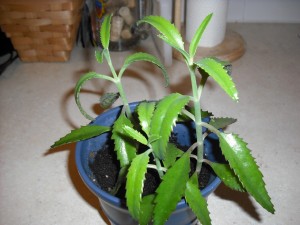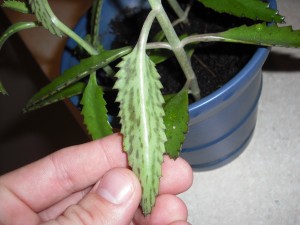What is the plant with the red flower? I have 4 identical plant dishes (picture attached) that I bought in this condition. Each contain the same 3 plants, I believe, and I think I’ve identified 2 of the 3 plants in this pot, minus the “jade looking” one that has the red flower on top. Do you know what the “jade-looking one” is really named?
Also, do you think they look over or under watered (or may have another problem)? The soil does smell musty/damp. I think I need to repot them, but should I let them lay out and dry out for a few days or other? I know these are a lot of questions, but if nothing else, can you at least identify and name the jade-looking plant? THANKS!
What Is This Succulent With A Red Flower?
What are these plants from the Vizcaya Gardens in Miami?
Ask the Expert: What are these plants?
I’m unsure as to what these plants are, one I believe is a sedum/sempervivum. They are both from Vizcaya Gardens in Miami. Also are the two plants which looking very similar the same? One was in the shade and one in the sun which could explain the difference in colour on the edges of the leaves. Emma
Is My Jade Plant Really A Jade Plant??
Ask The Expert: I believe this is a species of jade plant and it’s been flowering beautifully since January but i cant figure out what kind it may be.
Flower Shop Network Plant Expert Reply: It looks more like a Kalanchoe blossfeldiana to me.
Response: It had been given to me as a cutling and called a jade but i surely couldn’t find a jade with flowers such as those. Thing is i been raising it like a jade all along so i’m guessing that it’s also a succulent type plant with similar care then? And the flowers look right on to what you said bt the only thing i think looks different is the leaves of the plant mine seem much more rounded and not as “jaggedy” as the Kalanchoe i see on google but i assume this could be because my plant is young and there’s probably many many sub species of this type as well it seems.
What Are These Clippings From A “Really Cool Plant” In Tucson
ASK THE EXPERT: My best friend is living in Tucson, Arizona, and sent me some clippings from a “really cool plant” there that can apparently grow a whole new plant and survive in Utah, where I am. I took it to a local nursery and they said they thought it was succulent.
The leaves are about four inches long and two inches wide, with smooth small ridges on the outside. They have spores, and I believe the couple of sprouts I have fell off of the leaves are from the spores. I really would like to keep this thing alive, but I need to know what it is first. I have it in cactus, palm, and citrus soil for now.
Flower Shop Network Plant Expert Reply: This one was a little difficult, so we contacted our local nurseryman, Neal Adams. He says, That one was tough! But I’m a pretty smart guy. It is Kalanchoe pinnata “Cathedral Bells”
The Kalanchoe pinnata is indeed a really, cool plant. It has big, droopy bells for blooms that make it really unique.
Plant Care For Kalanchoe Plants
Kalanchoes are typically easy to care for plants and require minimal plant care. Water Kalanchoes moderately, letting the soil dry completely before you water them again. Make sure your container has good drainage; succulents are easily damaged by over-watering. Kalanchoes love bright and sunny locations, but will stand other lighting conditions. They must be kept above 54° at all times, although higher temps are preferred.
Care & Maintenance For Kalanchoe Plants
To keep Kalanchoes well shaped, pruning is necessary. Trim spent blooms and their stems as needed to encourage future blooming. For a fuller plant, pinch the top back to the second or third leaf to encourage branching.
For more information, check out Flowering Kalanchoe blossfeldiana: Care & Maintenance.
This post is brought to you by local Tucson florists.
Not in Tucson AZ? No worries, use Flower Shop Network’s handy directory of local florists to find a florist near you.
Pink Blooming Succulent Is A Kalanchoe
Ask the Expert: What kind of plant is this?
The leaves appear to be a succulent, because they are thick and spongy. The flowers are like heather… Heather
Plant Expert Reply:
You have a succulent called Kalanchoe blossfeldiana. This happens to have pink flowers but they also come in yellow, white, red and orange. Give it bright filtered light and keep moist to the dry side. Watch for pests like aphids and mealybugs. If kept too wet, kalanchoes can develop powdery mildew, leaf spot, as well as , crown and root rot.
Kalanchoe Leaf Curl
Ask the Expert: Mother of Thousand Plant.
I have a Mother of Thousand growing in my home, but the problem I am having is that the leaves curl. Am I watering it to much or what. Would you please give me some helpful hints. Would greatly appreciate it Thank you Patricia
Plant Expert Reply:
I assume that your plant is a Kalanchoe diagremontiana (mexican hat plant or mother of a thousand – See picture). These plants are susceptible to thrips, cyclamen mites, and leaf rollers which can all cause leaf curly. If this is the problem you will need and insecticide or miticide to get rid of the problem. Use a magnifying glass to verify that you have a insect problem. Your local garden center should have a houseplant insectide/miticide that will be safe for your Kalanchoe.
These insect usually take over a plant when it is in stress. Keep you Kalanchoe evenly moist at all times. Do not keep it soggy this will cause root rot.
Good luck and keep me posted.
Memorial Plant Is A Kalanchoe
Ask the Expert: I am stumped trying to identify this plant
We were given this plant when my father in law passed away. It grows well in direct sun with daily watering. I have tried everywhere to identify it but can not.. Can you help me. I thought it was a bogonia but everyone tells me Im wrong the flowers arent right.
Thank you for all your help
Bob
Reply:
What you have is a Kalanchoe blossfeldiana.
My Name Is Kalanchoe Blossfeldiana
Ask the Expert: What kind of plant is this?
I received this plant about 3 years ago, it originally was small and had pink blooms on it. Since then I has never bloomed again and it seems to be growing straight up. It is really easy to regrow. All you have to do is pull off a leaf and stick it in the dirt and boom a new plant will grow. The leaves are dark green and waxy/shiny. LuAnn
Reply:
LuAnn,
You have a type of Kalanchoe blossfeldiana. Yes, they are very easy to grow. It looks as if this one is getting ready to bloom again. The more you pinch it the fuller the plant will become and it will also keep it from becoming leggy. In order for kalanchoe to bloom they need lengthy exposure to darkness similar to that of a poinsettia. In the greenhouse, we move them to a place that has really low light and that seems to work for us. After they bloom we trim the plant back and this seems to help as well. The Flower Shop Network Kalanchoe page has some care tips that might help. Kalanchoe Care Tips. You’ll need to scroll down the page to see them.
10 Houseplants Poisonous To Dogs, Cats, or Children
Ask the Expert: what are the names of plants and flowers that are poisonous.
I work as a floral designer and I am asked all the time what plants and flowers are poison to animals and humans. Kelly
Reply:
Kelly,
First I want to clarify the difference between “poisonous as in deadly” and “poisonous as an irritant”. Many plants listed as poisonous are not deadly or really toxic, but rather cause an irritation to the mouth, stomach, skin or respiratory system. Why is this important? Because the classification of plants being poisonous is matter of interpretation and myths. For example, poinsettias are considered poisonous which is not all together true. There is no documented case where someone has died from ingesting a poinsettia. Secondly, the amount one a would have to ingest in order to accumulate the toxin level for death would be immense. However, poinsettias can cause great irritation to the skin or mouth.
When we discuss poisonous houseplants, we should take the approach that the American Animal Hospital Association takes on its Healthypet.com site with regards to its guide to toxic plants and foods. They state, “If you have these plants or foods, you need not dispose of them-just keep them away from pets and children.” Of course, plants that are deadly may not need to be in the home of small children or young pets. However, plants that can cause irritation or stomach upset may only need to be placed somewhere pets and children can’t reach them.
Here is a quick top 10 guide to plant toxicity for florists (note there may be plants that are carried by florists that are not listed. In these cases you will have to research that specific plant or email me and I will find out and add it to the list).
Houseplants with High Poison Plant Classification
According to many sources these ten houseplants are highly toxic to dogs, cats or children. The toxicity resides in ingesting the plants. So it is important to keep these away from dogs, cats or children who might chew on them. They are all wonderful plants and should not be excluded from our lives as long as we keep them under appropriate supervision.
Flowers that are considered highly poisonous are: Foxglove (Digitalis), Amaryllis bulb, Bleeding heart, Lily-of-the-valley, Delphinium, Larkspur, Monkshood, Anthurium, lilies and Calla lily. Many times with flowers it is the bulb from which they come that is toxic if eaten by a dog or a cat.
There are other houseplants and flowers that are considered a mild or moderate risk. Although not a complete list by any means, this is a short break down of plants or flowers that cause a mild or moderate irritation or toxicity in dogs, cats or children:
Peace lily, Chinese evergreen, Benjamin fig, Corn Plant, Dracaenas, Nephthytis, rubber plant, Pothos,
English Ivy, Mother-in-law tongue, Azlaea, Croton, Easter Lily, Hyacinth, Daffodils, Chrysanthemum, Bird of Paradise, iris, lupine.
You can find more information on the Healthypet.com prevent poisonings page or the ASPCA Animal Poison Control Page.
Hopefully this information will help you and your customers select the appropriate houseplants and flowers for their specific situation.
I have had many of these plants and flowers in my home. Fortunately for me my puppies found that these plants were not interesting and did not taste good. I don’t worry about having “poisonous” plants in my home or yard. I do make a mental note of plants that can be harmful in case my vet needs to know my dogs have been exposed to.
Click on the button below to find the right house plant for your home. Flowering house plants keep us smiling and cheery; green house plants ease our minds and provide comfort, while tropical house plants make us feel composed and sophisticated.
If you don’t see a particular plant on the lists above. Contact me for a more comprehensive list.
Order a House Plant
Are You Ready for the Mother of Thousands?
Ask the Expert: What type of plant is this??
i got this from some one and they said that its some type of weed from Florida, thats all i know id like to know what this is so i can get it in the right soil and care for it the right way. i am sending you two pics because the underside is got some distinctive markings
thanks, Drew
See Attached Pictures


 Find Your
Find Your 